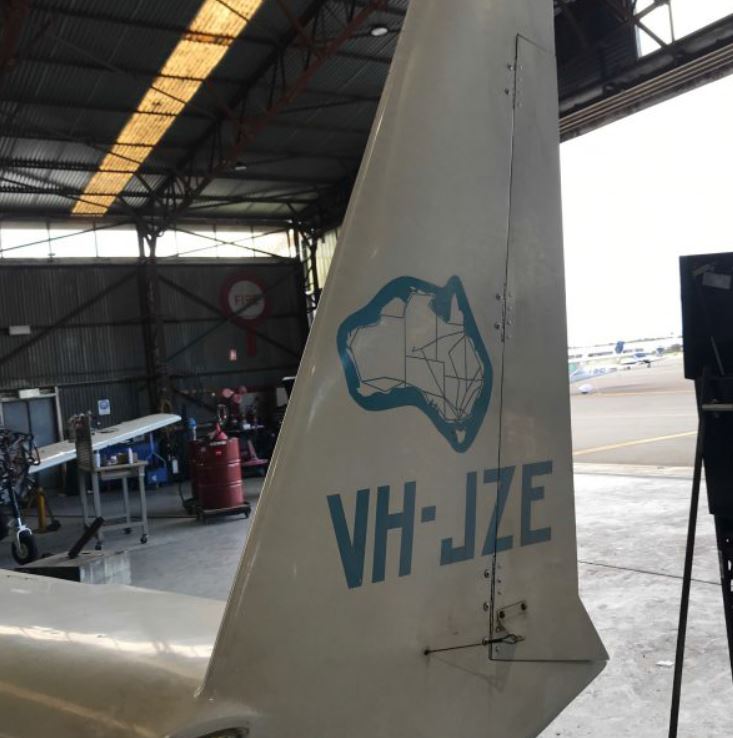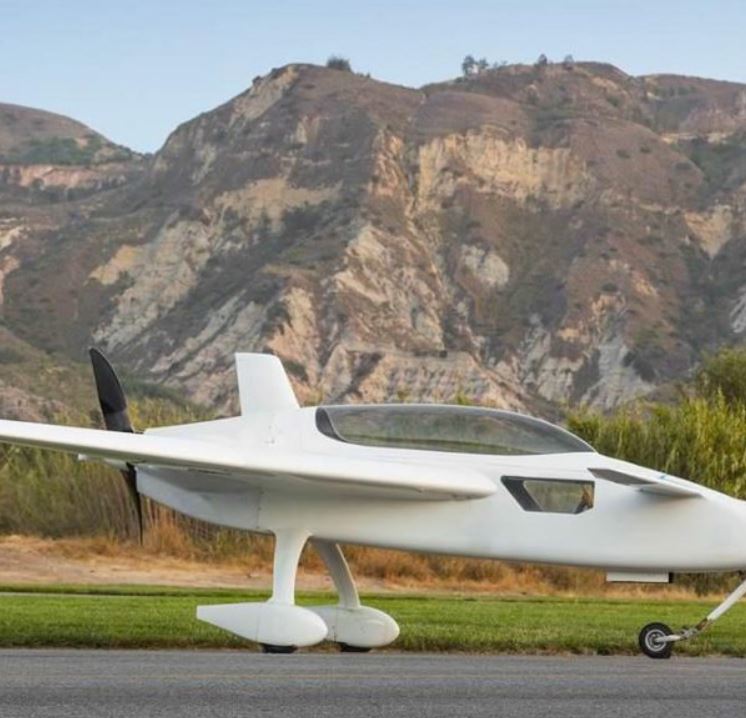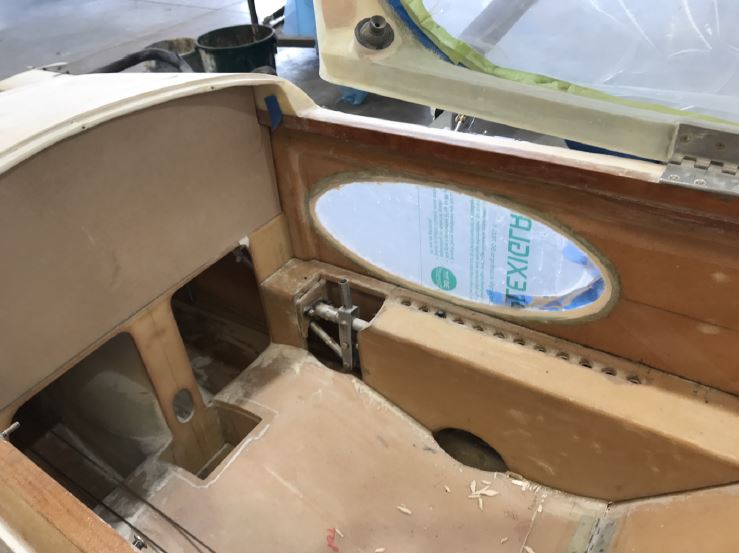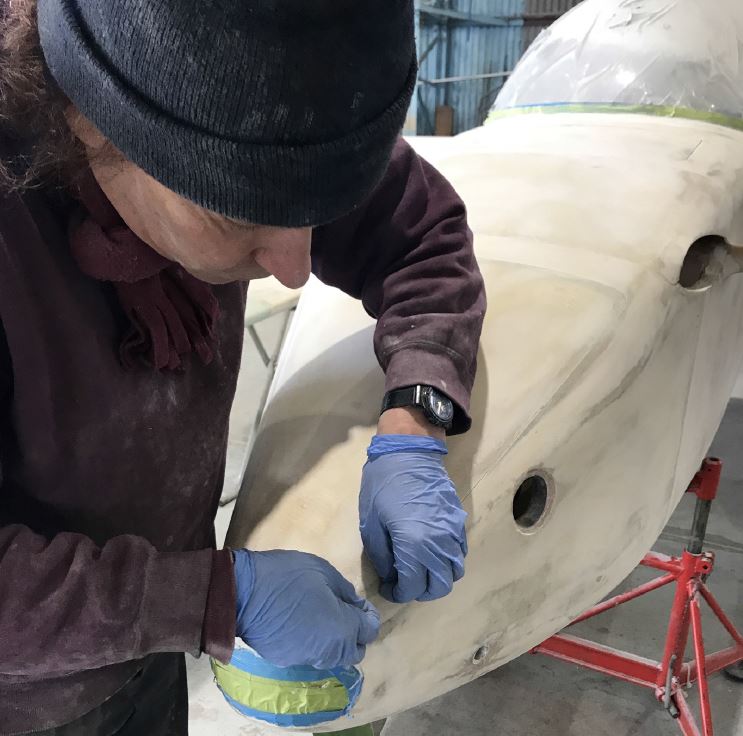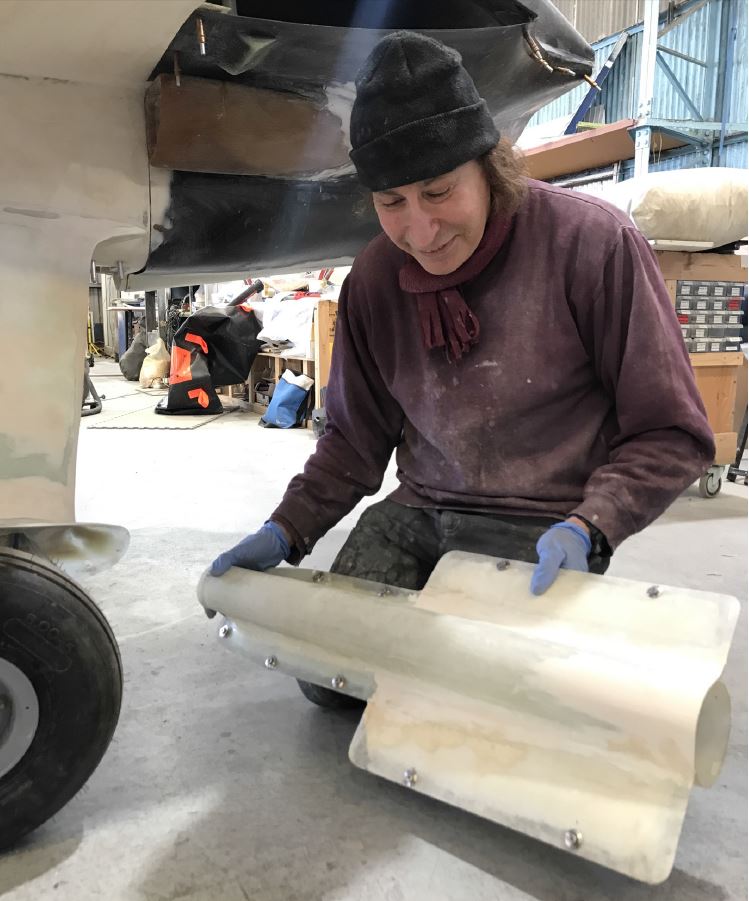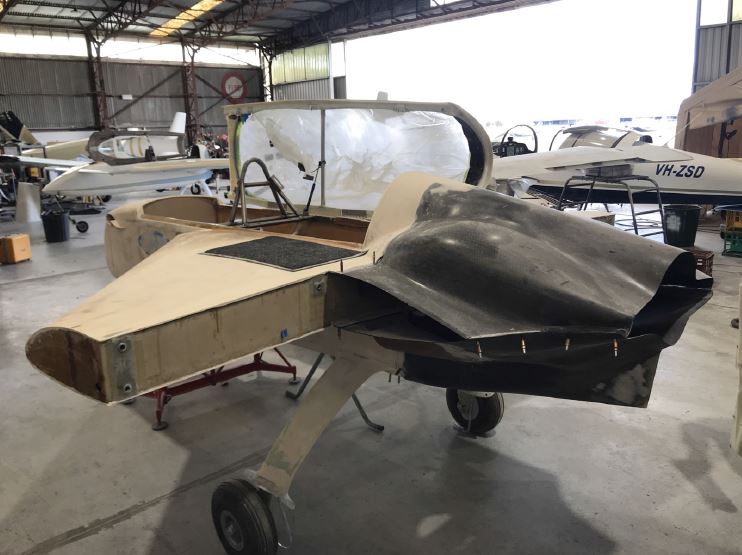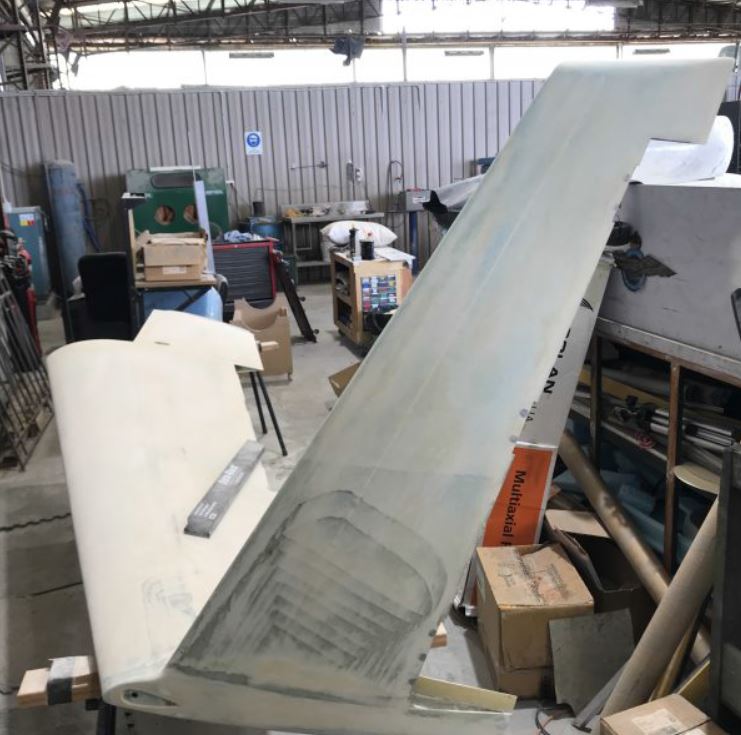THE RUTAN LONG EZ: AROUND THE WORLD
Courtesy: AOPA Australia. By AOPA Australia Digital Editor, NICHOLAS CHRISTIE.
The Aircraft Owners and Pilots Association of Australia (AOPA Australia) was founded in 1949 to speak as the unified voice for general aviation in Australia. Since then, AOPA Australia has grown to meet the ever changing needs of the aviation community becoming the recognised voice of general aviation in Australia.
To join, visit www.aopa.com.au/membership
When I called AOPA Member, Dave Berenholtz to discuss catching up to see his Long EZ aircraft (pronounced ‘EE-ZEE’ because the ‘yanks’ pronounce things strangely), I was excited. I knew a few things about Dave, like that he had been some months full time on the project at Moorabbin Airport. And that he already had purchased a flying Long EZ some years before. But it’s what I didn’t know that totally floored me – this musician and ex guitar shop owner had never really built a thing in his life, and the aircraft was always destined to fly him around the world.
Dave Berenholtz was a glider pilot in the 1980’s. He had owned and flown gliders since 1986 where he learned at Euroa and – plagued with what he terms “a pretty serious virus” (the aviation bug) – he moved swiftly into Gyros; you know, the ‘Mad Max’ type with an open frame and 582 motor out back. He enjoyed both disciplines throughout the next decade, while playing gigs and owning a music store and guitar repair business.
“I was lazy”, and honestly I still am”, explains Dave, his hands, face and clothes covered in fibre glass dust in his corner area inside the Royal Victorian Aero Club hangar at Moorabbin Airport.
ABOVE: The test ‘bookend’ that first demotivated, and then inspired Dave to build his Long EZ!
What IS the Long EZ?
The Burt Rutan-designed Long EZ plans were produced between around 1980 and 1985, with the first prototype taking to the skies in 1979. The aircraft has been popular since then, particularly in the US where there are over 2000 of them flying (and more under construction). It’s a handy aircraft in the air because of its minimal drag and exceptional stability, with a TAS of around 155kts at 8000 feet and top speed of 178 knots with a Lycoming O-235 pushing from the back.
But aside from its speed, the Long EZ is agile, and very stable in slow speed flight. Dave explains to me that the main wing cannot stall, because the canard will stall first, with the aircraft simply ‘bobbing’ as the canard flies and stalls again as the stick is held back. The result is some altitude loss, but not a stall in the conventional sense, and a spin is entirely out of the equation.
“I’ve had it in a 50 degree turn, in a stall and there was no wing drop. It’s a wonderful safety feature”, he explained.
ABOVE: Inside VH-JZE’s cockpit. The pilot sits comfortably, but leg space is quite limited above the knees.
As I jumped in, I noticed that the seating position is very snug (particularly above the knee as you slide the legs under the panel, but quite comfortable, with control stick in an excellent position on the right and throttle, mixture and carburetor heat in the same position on the left side.
Dave then explained another fascinating design feature; there’s no need for rudder input in a turn when above 100kts because of the length and camber of the winglets.
The engine is in the back and a pusher prop is needed. Most Long EZ’s have a Lycoming 100HP engine, but there are many variations to the theme, with a few in the States modified to fly with Jet Engines (the ‘Jet EZY’). It’s an aircraft for the true aviation building enthusiasts; those that are atypical of the more mainstream builder-pilot types that take on easy-to-understand plans and aluminium ‘pre-punched’ kits like the Van’s RV-9, 12 and 14. This is serious business for those that want a great airframe, but need to make their own modifications come to life!
ABOVE: The winglets act as the vertical fins and rudder; creating excellent stability in yaw (there’s no rudder required in turn above 100kts!
Dave’s aircraft is a strange looking thing, and must have been alien to most in 1987 when it was built in Latrobe Valley (Victoria) by Jim Glinderman. The type is unconventional as far as a normal fixed wing aeroplane is concerned. There’s a pokey-looking horizontal canard at the front complete with a tiny elevator, there is no vertical fin, the wings are swept back and feature huge vertical winglets (very similar to those on some smaller passenger jets like the Airbus A321, and there’s a rudder on the trailing edge of each.
VH-JZE was a ‘surprise’ purchase (to Dave) after the previous owner landed at Lethbridge and Drew bought it then and there.
“The guy landed, he said it’s for sale and I said I’ll buy it – I just knew that it would be mine as soon as I saw it”.
Now Dave needed a license to fly it, so he went to Moorabbin and flew with a few instructors before settling at Royal Victorian Aero Club. He kept the gyro and used the Long EZ to travel to fly it at Lethbridge, after familiarisation training with the previous owner in the back seat.
ABOVE: Commanding ramp presence – the Long EZ has visual appeal.
Even after a few happy years flying his purchase, Dave – a self-confessed “researcher” of potential improvements for the Long EZ design – still wasn’t fully satisfied. He needed more performance from this already capable airframe and there were a few ‘bugs’ that, well, bugged him enough that he wanted to make something similar, but much better.
Rather than stripping and modifying a perfectly good aircraft, he took the Long EZ plans supplied VH-JZE to Officeworks, and had them reproduced and enlarged for the next phase of his Long EZ adventure.
ABOVE: Dave has made countless modifications, including these perspex sight windows that improve visibility.
He knew that he needed to build a modified, improved version of the aircraft that he had grown to love – not because he wanted to necessarily, but because he felt a calling to complete something that would challenge him in nearly every way; financially, time wise, from the stand-point of overall capability, patience and his will to “get up everyday and go to work”. Dave explains that turning up at the hangar each day is really ‘hard work’ – and while enjoyable – it’s like any job, often fraught with frustrations and sometimes even deeply dissatisfying.
“I’m lazy by nature, and I had no experience building anything really, let alone with fibreglass. I started the project because I felt a need to do it, not because I knew I would love to do it” he explains.
ABOVE: Dave carefully opens the nose catch. Inside is a bespoke cockpit adjustable landing light system.
But the project didn’t start well. The first prescribed ‘experiment stage’ playing with fibreglass was a small project creating a ‘book end’. Dave had no skills in glassing and the bookend was, in his words, a ‘disaster’. So, he gave up on the idea of building an aircraft, and returned to flying instead, for around three years.
“For three years the idea bugged me and just wouldn’t go away”, he said.
So, he returned to the plans and built other smaller projects, like shrunk-down Long EZ seats, until his confidence and proficiency in fibreglass was improved and the project began in earnest.
ABOVE: The design of various bespoke aerodynamic components used to improve airflow and engine output were the result of hundreds of hours of research, building and testing.
Breaking Records & Around the World
Dave always knew that this project would be unique because it wouldn’t end with simply a completed aircraft. It would be the aircraft that he would eventually fly around the world in, multiple times over many years (if all goes to plan) and both aircraft and pilot will pick up various records along the way. It was an idea that came along with the challenge of building the aircraft and something that Dave says is the driving force behind his commitment.
“The idea to build the aircraft wouldn’t go away and the idea of flying the aircraft around the world was something that was equally strong. I knew the end goal but I had no idea how I was going to do it”.
Once it’s built and the first trip around the world is complete, Dave intends to do it again, using more challenging routes – but this time with the benefit of the experiences and insights gained on the first attempt.
The aircraft – Modifications and ideas
The list of Dave’s highly researched and painstakingly tested modifications for this aircraft is too extensive to fully document here, accounting for much of the 9000+ actual build hours already spent on the aircraft.
Needless to say, a tour of this aircraft reveals and extraordinary amount and depth of thought. There are some modifications that Dave has identified as improvements on the original Long EZ design, like the forward lower perspex windows to increase visibility while joining the circuit to land, front adjustable angle headlights and side strobes for increased visibility in the circuit (ATC often describes the type as ‘difficult to see’). The pins on the various hatches instead of screws improve the aesthetics and a wider canopy will improve visibility and pilot’s head movement range. There’s other things too like air vents that double up as handles to open the hatch, roll trim, and the roll over bar is titanium for its light weight and strength.
ABOVE: The aircraft has been modified in many ways, including additional perspex viewing ports, wider canopy, RAM air intake, improved landing gear leg fairings and a bespoke fuel system for long flights.
But some of the modifications are purely for the very long, over water legs that Dave will endure on his voyage. For instance there are two wing tanks, a 250 litre ferry tank (mounted behind the pilot) and a common tank. The ferry tank is used to automatically top-up the wing tanks so there’s no emptying and switching tanks required; something that can be fraught with danger and one less thing to go wrong in flight. The methodology utilises optical sensors to determine when the tank is roughly half empty and redundancies (another optical sensor on the feed line) to determine if the ferry tank stops pumping. It’s rather a simple system, but ingenious at the same time.
Dave has thought to add heaters to the fuel vent outlets to prevent icing, a ‘Ram Air Intake’ that he designed to provide about 1 extra inch of manifold pressure to the air intake and specially designed gear leg fairings that improve angle of attack of the gear and add lift while decreasing drag.
The engine is an Andrew Higgs designed liquid-cooled, balanced and blueprinted Lycoming IO-360 that will output around 240HP for the approximate weight of the 180HP.
ABOVE: The left wing nearing completion before Dave’s rolled-on and polished paint system is put to the test.
When asked about paint, Dave points to a paint test board that he has used to perfect a method of rolling on marine-grade boat paint and polish it to achieve a better result than spraying. He’s installed longer rudders and reduced the amount of surface area of the lower winglets and – for the best HF communications across huge expanses of water – a 62 foot Dipole HF antenna runs through the wings.
The avionics will be full Garmin, with a G3X, GTN750 GPS, G5 and other equipment including autopilot and an oxygen system that Dave has tested to 18,000 feet that compresses the air via generator (and doesn’t require a bottle). The list simply goes on, and on – one wonderfully thoughtful modification after another, designed to either improve performance, safety or the overall experience for the pilot.
AOPA Australia will be following Dave as he progresses towards the completion, flight testing and the departure date on his epic first around the world flight. You can see a detailed record of the progress of the project, or contact Dave directly at his dedicated website entitled ‘A long Way ‘Round the World’ at www.alongwayroundtheworld.com.

 \
\

